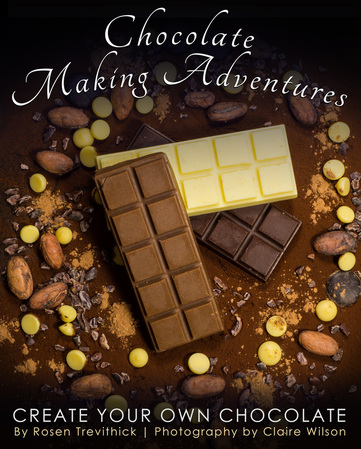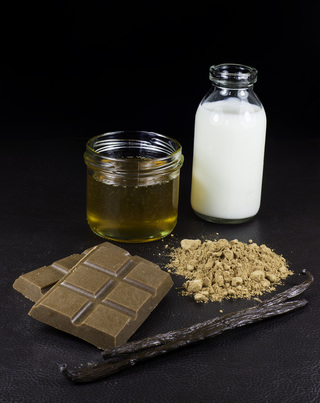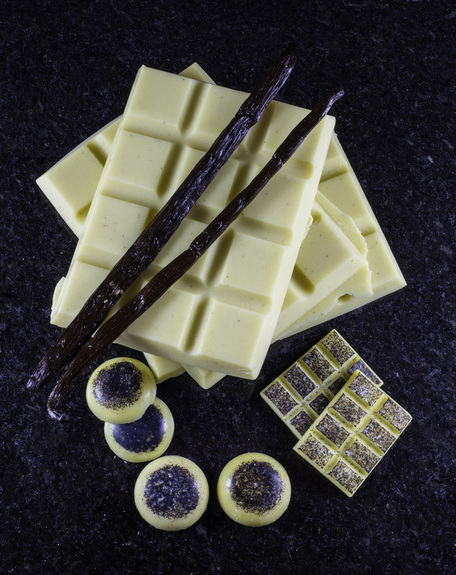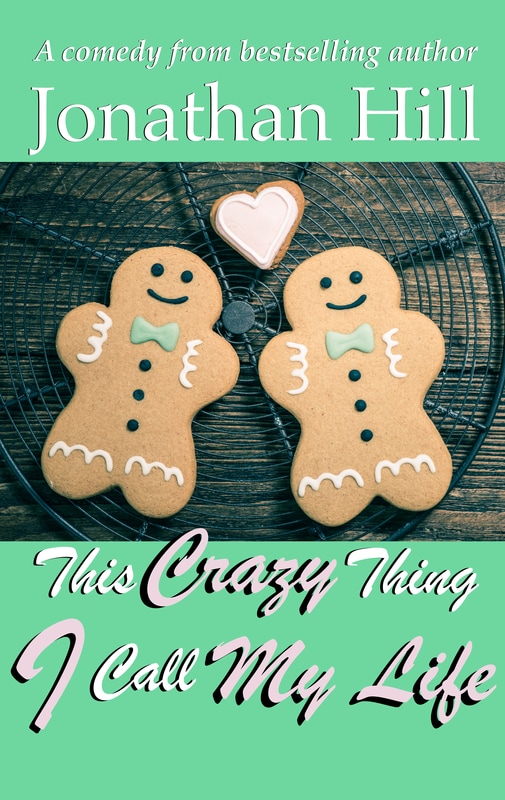
Author Rosen Trevithick is widely known for her humorous and psychological fiction books for adults and her delightful smelly troll books for children. But now she tackles something completely different but no less appetising! Rosen has written a guest post for my blog on the challenges she has faced to get a chocolate-making book to market and how the process differed from that involved in publishing fiction.
I’ve just released a cookbook called ‘Chocolate Making Adventures’, which is full of recipes and tips about making and working with chocolate. This is very different from the books I usually publish, which are predominantly fiction published in black and white. So in what way does self-publishing a recipe book differ from publishing more mainstream books?
When I first decided to write a cookbook, I thought it would be a case of simply writing down all my recipes, commissioning half-a-dozen photos and then converting a Word document. Nothing could be further from the truth.
Writing
My first mistake was thinking that writing down a recipe would be as easy as writing fiction. It isn’t. With fiction, there is an infinite number of ways to say what you want to say and you can make your writing as concise or descriptive as you like. You don’t need every reader to understand your exact meaning of every single sentence for him or her to experience what you set out to achieve. In fact, very few readers intend to take in every single clause, as they hurry through desperate to find out what happens next. With recipe books, every line has to be spot on. If your sentence is ambiguous or you miss an adjective, your reader can waste an hour of his or her life, and the cost of ingredients, trying to follow your method. My inner fiction writer would have happily taken three of my 8x10 inch pages to explain every recipe, but too much detail would have been daunting for the reader.
Layout
Recipe books are very difficult to develop in a way that looks good both in print and as an eBook. For example, the Kindle format is not designed for images that are aligned to the side of text. You need inline images. However, people following recipes don’t want to have to keep scrolling through images to get to the next step. Eventually, I decided to use alternating text-only pages and full-screen images. This also looked great in print, with most recipes sitting opposite a gorgeous photo of its results.
Photography
The next obstacle was the photographs. I was fortunate enough to have the opportunity to work with a superb photographer, but what I didn’t realise was that we would also benefit from a food stylist. The aforementioned stylist is somebody who prepares and arranges food so that it’s perfect for photographing. Instead, I made all the chocolate myself and gave it to Claire, who then had to adapt/accessorise it for the photographs. The chocolate took about ten times as long to prepare as I had envisaged, pushing what I hoped would be an early October launch, back into November.
I’ve just released a cookbook called ‘Chocolate Making Adventures’, which is full of recipes and tips about making and working with chocolate. This is very different from the books I usually publish, which are predominantly fiction published in black and white. So in what way does self-publishing a recipe book differ from publishing more mainstream books?
When I first decided to write a cookbook, I thought it would be a case of simply writing down all my recipes, commissioning half-a-dozen photos and then converting a Word document. Nothing could be further from the truth.
Writing
My first mistake was thinking that writing down a recipe would be as easy as writing fiction. It isn’t. With fiction, there is an infinite number of ways to say what you want to say and you can make your writing as concise or descriptive as you like. You don’t need every reader to understand your exact meaning of every single sentence for him or her to experience what you set out to achieve. In fact, very few readers intend to take in every single clause, as they hurry through desperate to find out what happens next. With recipe books, every line has to be spot on. If your sentence is ambiguous or you miss an adjective, your reader can waste an hour of his or her life, and the cost of ingredients, trying to follow your method. My inner fiction writer would have happily taken three of my 8x10 inch pages to explain every recipe, but too much detail would have been daunting for the reader.
Layout
Recipe books are very difficult to develop in a way that looks good both in print and as an eBook. For example, the Kindle format is not designed for images that are aligned to the side of text. You need inline images. However, people following recipes don’t want to have to keep scrolling through images to get to the next step. Eventually, I decided to use alternating text-only pages and full-screen images. This also looked great in print, with most recipes sitting opposite a gorgeous photo of its results.
Photography
The next obstacle was the photographs. I was fortunate enough to have the opportunity to work with a superb photographer, but what I didn’t realise was that we would also benefit from a food stylist. The aforementioned stylist is somebody who prepares and arranges food so that it’s perfect for photographing. Instead, I made all the chocolate myself and gave it to Claire, who then had to adapt/accessorise it for the photographs. The chocolate took about ten times as long to prepare as I had envisaged, pushing what I hoped would be an early October launch, back into November.
Printing
By far the biggest obstacle was that self-publishing is not ready for glossy, colour photobooks. Colour printing is incredibly expensive and I was initially looking at figures such as £20 for a 100 page recipe book, which I knew wouldn’t sell. Added to which, the only companies I could find that offered coated pages, lacked distribution options. This meant I had to compromise and accept matt pages. Having previously published a colour children’s book, ‘My Babysitter is a Troll’, I felt certain that the colours would be vibrant enough to do justice to Claire’s photographs. Unfortunately, the first nine proofs I ordered were not satisfactory. This could have been avoided had I created my book using CMYK (a particular colour format used in printing) from the start. Thinking that I could simply replicate the process I use for publishing black and white books, was a big mistake, and one that has set my launch back by a precious two weeks.
Advice
My advice to anybody thinking about publishing a textbook, is to carefully research options and print specifications before you begin. Even if your chosen print-on-demand service doesn’t ask for a particular colour format, there are some formats that print better than others.
Publishing a recipe book was a steep learning curve, but it has been a rewarding experience. With very few books out on how to make actual chocolate, I am confident that my book adds something fantastic to the cookbook market.
Links:
My recipe blog: http://www.rosentrevithick.co.uk/recipes/
The Kindle book on Amazon: http://www.rosentrevithick.co.uk/B017WUOSOE/
By far the biggest obstacle was that self-publishing is not ready for glossy, colour photobooks. Colour printing is incredibly expensive and I was initially looking at figures such as £20 for a 100 page recipe book, which I knew wouldn’t sell. Added to which, the only companies I could find that offered coated pages, lacked distribution options. This meant I had to compromise and accept matt pages. Having previously published a colour children’s book, ‘My Babysitter is a Troll’, I felt certain that the colours would be vibrant enough to do justice to Claire’s photographs. Unfortunately, the first nine proofs I ordered were not satisfactory. This could have been avoided had I created my book using CMYK (a particular colour format used in printing) from the start. Thinking that I could simply replicate the process I use for publishing black and white books, was a big mistake, and one that has set my launch back by a precious two weeks.
Advice
My advice to anybody thinking about publishing a textbook, is to carefully research options and print specifications before you begin. Even if your chosen print-on-demand service doesn’t ask for a particular colour format, there are some formats that print better than others.
Publishing a recipe book was a steep learning curve, but it has been a rewarding experience. With very few books out on how to make actual chocolate, I am confident that my book adds something fantastic to the cookbook market.
Links:
My recipe blog: http://www.rosentrevithick.co.uk/recipes/
The Kindle book on Amazon: http://www.rosentrevithick.co.uk/B017WUOSOE/
Thanks to Rosen for this interesting and insightful article. I've ordered my copy of the paperback and have been lucky enough to sample the results - my friend was involved in the process of testing the recipes - and those results were gooooood! I now look forward to making my own chocolate.




 RSS Feed
RSS Feed